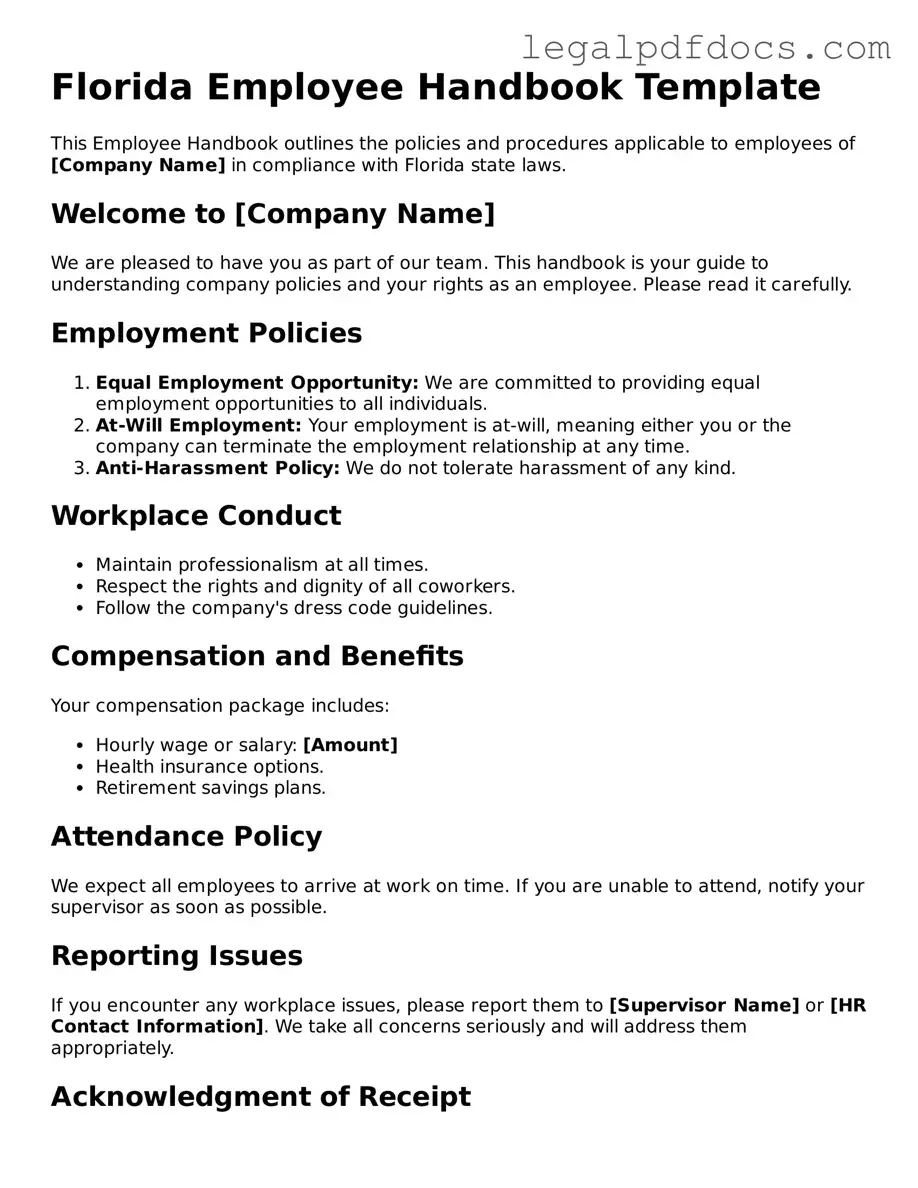Official Employee Handbook Form for Florida
The Florida Employee Handbook form is a crucial document that outlines the rights, responsibilities, and policies of both employees and employers within the state. This form serves as a guide to help ensure a clear understanding of workplace expectations and legal obligations. To get started on creating or updating your handbook, fill out the form by clicking the button below.
Open Employee Handbook Editor Here
